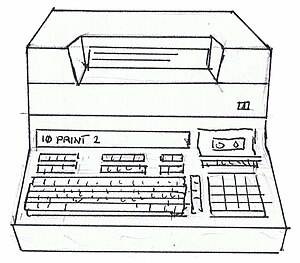I was chatting with an associate in consulting firm yesterday about all kinds of software solution requirements. He shared a little revelation that put a lot of my day into perspective. He said to me something like,"I love working with vertical solutions, those things helping pest control companies, or lawn care companies, or whatever, work better. It is so much easier to be able to find the words describing what keeps the owner awake at night when you get your head into it, rather than trying to talk to the CIO of a major insurance company about strategic systems architecture". Gaining enough insight to see the issues a unique company is having is hard, but it gets so much easier when you can share war stories from similar businesses doing the same type of things.
I have always believed in selling solutions to business problems, possibly because selling technology for the sake of technology seemed tough to me. What little salesman there is in me is true to the point I learned in "How to Win Friends and Influence People" years ago. You can't sell what you don't believe in, and if there is not a problem being solved I find it hard to get passionate about the technology. So I try hard to sink myself into business problems to make the technology desirable (to me and a potential customer).
Yesterday, I messed it up big style. I have been looking at solutions for real estate agents, among very many other industries. I have bought a house, admittedly in a different country years ago. House buying had a different set of terminology and rules, but I feel that I understand what it is like to be a home buyer. Things have moved along, and we now have smartphones, GPS, and QR Codes on the For Sale signs. Mobile websites make finding information about a house you are standing outside so much easier. I thought I could build enough empathy to feel what goes through a modern buyer's mind, and what will make them into a profitable client for a real estate agent. The thing is, I didn't keep an open enough mind to really see the power of mobile technology. I obsessed about the home buyer, the "realtor's" client. I missed the fact that an agent can benefit from mobile technology even more directly.
Crap! I know nothing about selling houses. I know nothing about spending your week on the road visiting properties with clients. It should have been obvious to me that the agent is an even bigger consumer of mobile technology than the home buyer. It took a partner with real estate sales background to jam that thought home. Now I have it.
So, I may be the creator of some of my own thoughts, few of them completely unique I'm sure, but that doesn't mean that I know everything. Humility means that I'll assume nothing for a while and stop trying to be the expert in anything. I will ask more questions. Not just 'why' does something matter, but 'who' does it matter to. For any business involved in designing products or delivering solutions to customers, an occasional slap in the face like this is important. It keeps you grounded in not just what you think your customers want, but who your customers actually are!
A post from the Improving It blog
Let us help you improve your business today. Visit www.consected.com





